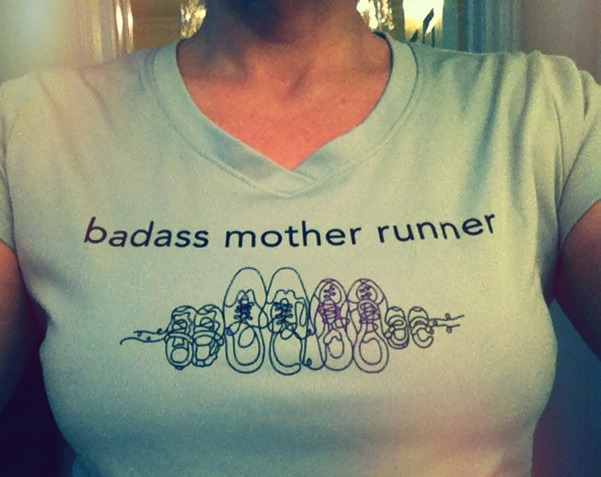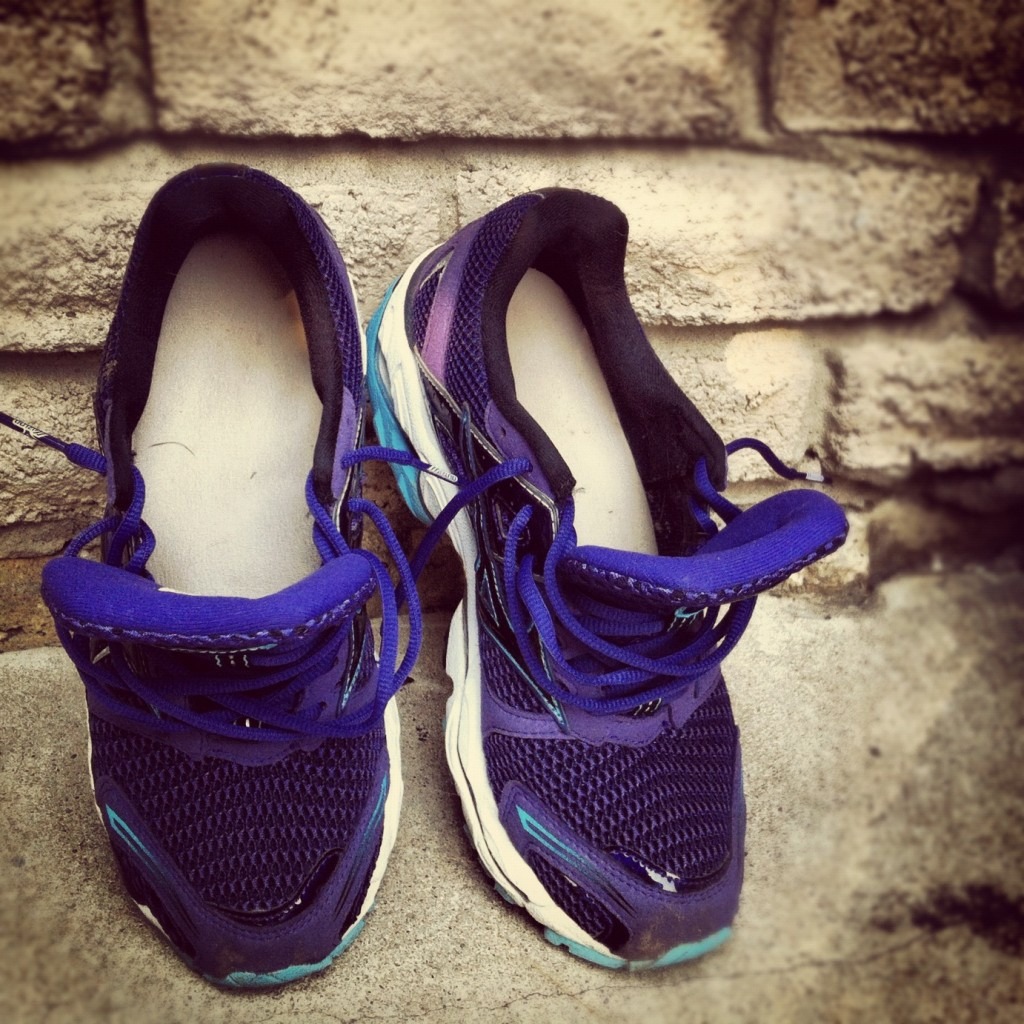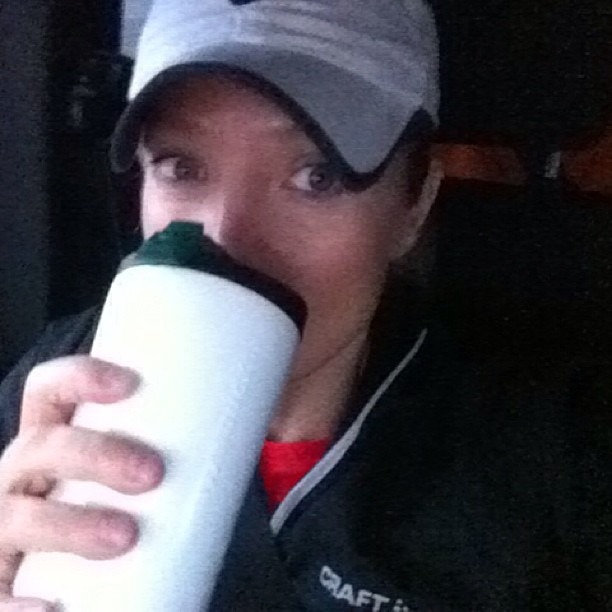
There are many women who fall into the former something category, and probably a few men too if they’ll fess up.
We were athletic in our youth and then life, children, work, laziness, and I-just-want-to-lie-here-and-drink-wine crept in. One day we wake up a little flabbier than usual—a sure sign is the muffin top becoming a 3-tier cake top—and running up a flight of stairs to break up a sibling smack down is the most exercise we get all week.
This happened to me and I’d had it. My self care had gone the way of my acid wash jeans, and while the jeans could stay in the dumpster where I’d left them (along with a BeeGees record I was too embarrassed to regift), the self care habit needed to make a comeback. I chose running to make my way back to good health. If I can run, almost anyone else can too, barring physical limitations or advice from a health care practitioner.
When I set out to run for the first time, I looked to other runners for advice. The experts can be intimidating in spite of their knowledge—sometimes because of their knowledge—and their perfectly toned 27-year-old bodies don’t always put us at ease either. What I counted on most were words of wisdom and encouragement from friends who ran, even when I thought they were crazy for being runners in the first place. They patiently fielded my 694 emails about breathing, stride, fueling, shoes, winter gear, stretching, and countless other concerns I had.
For anyone who has questions, here’s a crash course in how to be a runner when you’ve gone soft.
How to Be a Runner When You’ve Gone Soft
Getting Started
- Make a commitment to yourself to dedicate 30 minutes 3 times every week to your running program. Do NOT short-change this time commitment.
- Download a Zero to 5km running app. The one I chose was 5K Runner. It was easy to follow and delivered results.
- If you don’t have a smartphone, find a site that provides a framework to base your schedule on. The schedule will have you alternating between walking and running in the early stages, until you can manage longer runs.
- You will not always feel like running, but you will always feel better for having done it. I promise.
Where Do You Run?
- Run wherever you want to.
- If you have a gym membership, there are dozens of empty treadmills waiting for you.
- If you don’t do the gym thing, get outside or use a home treadmill. I’m an outdoor runner; I prefer the change in scenery, the elements, and the fresh air. Sometimes you’re treated to eau de skunk or pre-garbage pick up smells, but running past lavender in August more than makes up for it.
The Outfit Matters
- Start with the best pair of perfectly fitted shoes within your budget. Do yourself a favour and visit a running store where people who are runners and know what they’re doing can fit you properly.
- Buy comfortable, weather appropriate workout gear (this doesn’t have to come from a chichi store), a headband or hat with wicking material to prevent sweat from stinging your eyes, a sports bra (no one wants bouncing and bruising), and sunglasses.
- Running is one of the most financially accessible choices to get back into fitness. All you need are workout clothes, a good pair of shoes, and a sidewalk.

Stretch, Stride and Breathe
- Stretch carefully! Start with dynamic stretches before a run and finish with 10 minutes of static stretching following a run. You. Must. Stretch. It’s either stretch or face the morning after with a stiff ass followed by a day spent stuck on a toilet you can’t get off of.
- A short stride where most of the leg movement is centered below the body works best for many people. Save the longer strides for a sprint at the end. If you continuously run with a long stride you’ll risk overextending and injuring yourself.
- Keep your knees low. You’re running, not marching.
- A combination of nose and mouth breathing works best, but this is personal. You need to experiment with breath counts per stride and nose versus mouth breathing to find what gives you enough oxygen to manage the run. Don’t worry about how you sound or look. I sound like a woman in labour (with occasional grunting, but minus the screaming) and although I frighten old ladies walking their dogs, it works for me.
Fuel Up
- There are no hard and fast rules, despite what the experts say. According to the experts carb-loading before a long run is good fuel. For me, it’s a recipe for nausea. Experiment with what works for you.
- A good rule of thumb is to keep it light right before a run. If you’re heading out in the morning, try a banana, a small bowl of yogurt with granola, and a cup of coffee 20-45 minutes before the run. When I run within 20 minutes of waking up, I fuel with water only.
- Bring water or other hydrating fluids on your runs; it helps combat fatigue. By the time you’re tired or thirsty it’s too late and you’re on your way to dehydration.

You’ll have mornings when you feel terrible and sleep has been elusive and there have been so many nacho nights that running will be the last thing you want to do. Do it anyway. It happens to me all the time. I fell off the training wagon so long ago my running shoes had atrophied. I didn’t feel like running this morning, but I went because running makes me stronger, mentally and physically. And I never want to be out of breath again when I have to run upstairs to break up a sibling smack down, I need the breath to lay down the law.
If the only running you’ve previously done is from post-apocalyptic hordes in nightmares and you believe runners are crazy, which we are, it’s not too late to change your mind and join the fun.


 Think Outside the Island Destination Box: Family Travel in Costa Rica
Think Outside the Island Destination Box: Family Travel in Costa Rica
Nicole Boyhouse
I’m not a runner, but I used to be a pianist. I try to sit down at the piano twice a week and play 3 songs. I had mad skillz back in the day, so it’s taking a bit of relearning. Mostly my fingers remember what to do but learning new songs is a challenge.
Katja Wulfers
I love that you’re going back to something you used to do. The challenge is getting our brain to talk to our bodies, right?